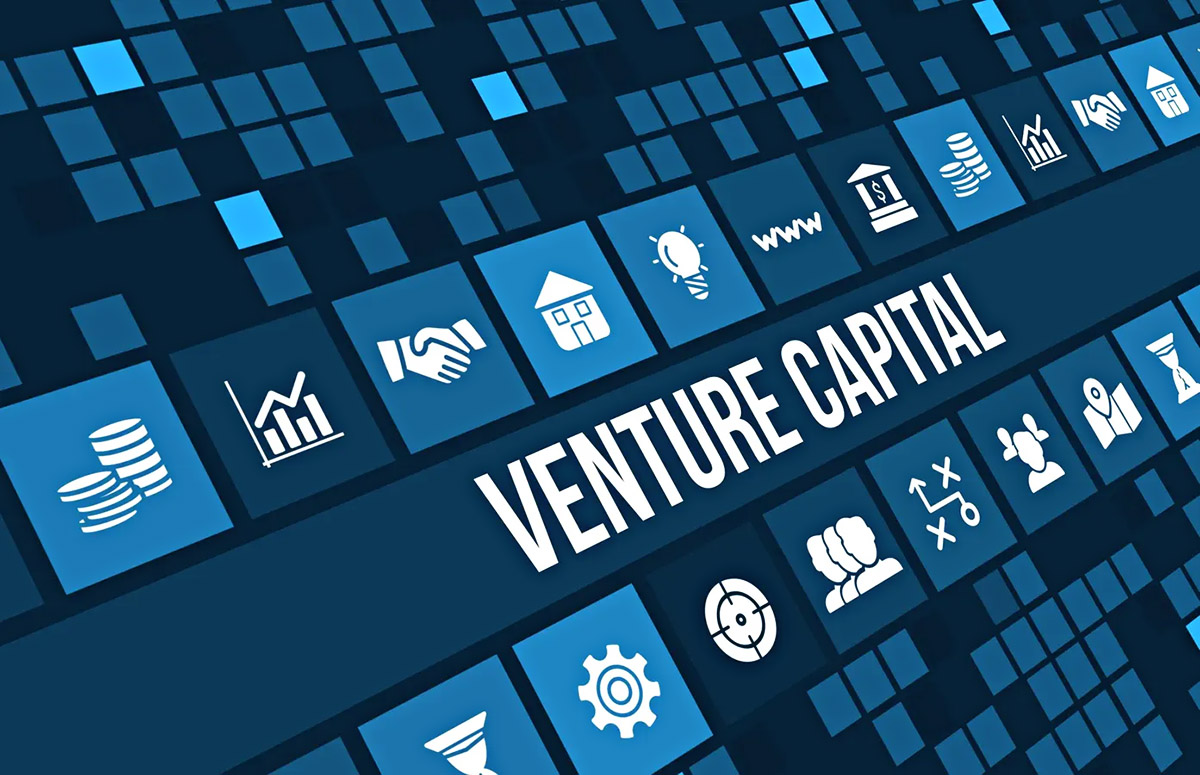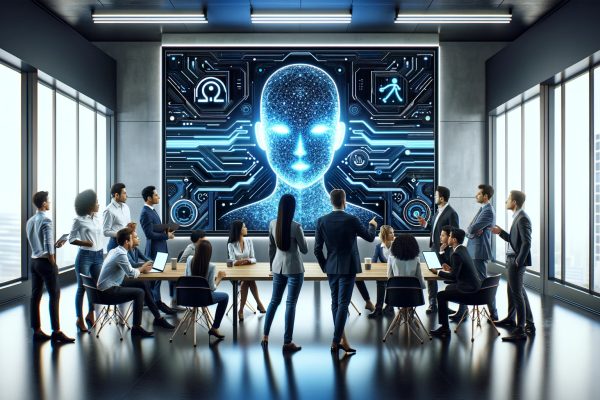

Finance
What Is An Investment In Human Capital?
Modified: December 30, 2023
Discover the importance of investing in human capital and its impact on finance. Gain insights into how enhancing skills and knowledge can lead to long-term financial growth and success.
(Many of the links in this article redirect to a specific reviewed product. Your purchase of these products through affiliate links helps to generate commission for LiveWell, at no extra cost. Learn more)
Table of Contents
Introduction
Welcome to the world of human capital investment – a concept that holds immense importance in the realm of finance. While we often associate investments with stocks, bonds, and real estate, it is essential not to overlook the significance of investing in human capital. In this article, we will explore the concept of human capital, its importance, the different types of investments, the benefits of investing in human capital, as well as the challenges and strategies for effective investment.
Human capital refers to the collective skills, knowledge, experience, and capabilities possessed by individuals within an organization or society. It encompasses both the education and training individuals acquire and the skills they develop through their work experiences. In other words, human capital is the intangible asset that individuals bring to the table, making it a priceless commodity in the world of finance.
Investing in human capital is the process of enhancing and developing the skills and knowledge of individuals with the aim of improving overall productivity, efficiency, and performance. This investment takes various forms, such as formal education, on-the-job training, professional development programs, and mentoring.
The importance of investing in human capital cannot be overstated. In today’s rapidly evolving business landscape, organizations must recognize that their greatest asset is their people. By investing in the skills and knowledge of their employees, businesses can foster innovation, improve operational efficiencies, and gain a competitive edge in the market.
Furthermore, investing in human capital has broader societal implications. A well-educated and skilled workforce not only boosts economic growth but also improves overall societal well-being. It leads to lower unemployment rates, higher wages, and a higher standard of living for individuals and communities.
Now that we have laid the groundwork, let’s delve deeper into the types of investments in human capital and the specific benefits they offer.
Definition of Human Capital
Human capital refers to the intangible assets that individuals possess, such as their knowledge, skills, abilities, and experience, which contribute to their productivity and potential economic value. It is the collective set of attributes that individuals bring to the table and can be nurtured, developed, and invested in to enhance their future capabilities.
Unlike physical capital, which comprises tangible assets like machinery and equipment, human capital resides within people and cannot be easily bought or transferred. It is cultivated through a combination of formal education, vocational training, on-the-job experience, and continuous learning throughout one’s career.
Human capital encompasses various dimensions, including intellectual capital, social capital, and emotional intelligence. Intellectual capital refers to the knowledge, technical skills, and problem-solving abilities that individuals possess. Social capital refers to the relationships, networks, and social skills that facilitate collaboration and cooperation. Emotional intelligence pertains to the ability to recognize and manage one’s emotions and empathize with others.
Investing in human capital involves allocating resources, both time and money, towards the development and enhancement of these critical attributes. This can be done through formal education programs, professional certifications, specialized training, mentoring, coaching, and continuous learning initiatives.
Human capital is dynamic and evolves over time. As individuals acquire new knowledge and skills, their human capital grows, increasing their value in the job market and their potential to contribute to economic growth. Conversely, neglecting investment in human capital can lead to stagnation, obsolescence, and diminished economic value.
The concept of human capital was popularized by economist Gary Becker in the 1960s, who recognized that investments in education and training contribute to individuals’ long-term productivity and earning potential. Since then, human capital has become a fundamental pillar of economic theory and organizational development, emphasizing the vital role that people play in driving economic growth and prosperity.
Now that we have a clear understanding of what human capital entails, let’s explore why investing in it is crucial and the different types of investments that can be made.
Importance of Investing in Human Capital
Investing in human capital is vital for individuals, organizations, and society as a whole. It yields numerous benefits that contribute to personal and professional growth, organizational success, and socioeconomic development. Here are some key reasons why investing in human capital is of paramount importance:
1. Enhanced Productivity and Performance: Human capital investments, such as education, training, and skill development, lead to improved productivity and performance. Individuals with advanced knowledge and skills are more efficient and effective in their work, resulting in higher output, quality, and innovation. Moreover, investing in human capital fosters a continuous learning culture that enables individuals and organizations to adapt and thrive in dynamic and competitive environments.
2. Increased Competitiveness: In today’s knowledge-driven economy, organizations that invest in their employees’ human capital have a competitive advantage. Skilled and knowledgeable employees bring new ideas, insights, and creativity to the table, fueling innovation and driving organizational growth. Additionally, organizations with a strong focus on human capital development attract top talent, leading to a more capable and motivated workforce.
3. Career Advancement and Employability: Investing in human capital enhances individuals’ career prospects and employability. Continuous learning and acquiring new skills make individuals more marketable and adaptable to evolving job market demands. It expands their employment opportunities, increases earning potential, and provides a pathway for career advancement.
4. Economic Growth and Prosperity: Human capital plays a crucial role in driving economic growth and prosperity. By investing in education, training, and skill development, societies can create a highly skilled workforce that fuels productivity and innovation. A well-educated and skilled workforce attracts foreign investment, spurs technological advancements, and contributes to overall economic competitiveness.
5. Improved Social Well-being: Investing in human capital has social implications beyond the economic sphere. It leads to improved individual and societal well-being by reducing poverty, increasing social mobility, and promoting social cohesion. Education and skill development empower individuals to make informed decisions, participate in democratic processes, and contribute positively to their communities.
6. Future-proofing Organizations: Rapid technological advancements and evolving market dynamics require organizations to adapt and evolve continuously. Investing in human capital ensures that organizations have the talent and capabilities to navigate these changes effectively. It facilitates the development of agile, resilient, and future-ready organizations that can withstand challenges and embrace opportunities.
In summary, investing in human capital is essential as it enhances productivity and performance, increases competitiveness, boosts career prospects, drives economic growth, improves social well-being, and future-proofs organizations. Now that we understand the importance of investing in human capital, let’s explore the different types of investments that can be made to develop and nurture human capital.
Types of Investments in Human Capital
Investing in human capital involves various types of investments aimed at developing and enhancing the knowledge, skills, and capabilities of individuals. These investments can take place at different stages of a person’s life and career. Here are some common types of investments in human capital:
1. Formal Education: Formal education is a primary investment in human capital, typically taking place in schools, colleges, and universities. It provides individuals with foundational knowledge, critical thinking skills, and a broad understanding of various subjects. Formal education includes degrees, diplomas, and certifications that validate an individual’s expertise in a specific field.
2. Vocational Training and Skill Development: Vocational training programs equip individuals with specific skills and competencies required for particular industries or occupations. These programs focus on practical, hands-on training and provide individuals with industry-specific knowledge and technical expertise. Vocational training can be obtained through trade schools, apprenticeships, on-the-job training, and specialized certifications.
3. Professional Development Programs: Professional development programs aim to enhance the knowledge, skills, and capabilities of individuals within their respective professions. These programs focus on continuous learning, staying updated with the latest industry trends, and acquiring advanced skills to excel in one’s career. Professional development can include attending conferences, workshops, webinars, and pursuing advanced certifications or postgraduate degrees.
4. On-the-Job Training: On-the-job training is a form of investment in human capital that takes place within the workplace. It involves providing employees with hands-on experience, mentorship, and guidance to develop specific job-related skills. On-the-job training can include shadowing experienced employees, participating in internships and apprenticeships, and receiving feedback and coaching from supervisors.
5. Continuous Learning and Self-development: Investing in human capital also involves fostering a culture of continuous learning and self-development. This can include encouraging employees to pursue self-study, participate in online courses, attend seminars, and engage in networking with industry professionals. Continuous learning helps individuals remain updated with emerging trends, acquire new skills, and cultivate a growth mindset.
6. Mentoring and Coaching: Mentoring and coaching programs provide individuals with guidance, support, and advice from experienced professionals. These programs help individuals develop both technical and interpersonal skills, gain insights from seasoned professionals, and navigate their career paths effectively. Mentoring and coaching contribute to the personal and professional growth of individuals, helping them unlock their full potential.
It is important to note that these types of investments in human capital are not mutually exclusive. Instead, they complement and reinforce each other, creating a holistic approach to human capital development. Organizations and individuals must consider a combination of these investments to maximize their impact and nurture a well-rounded set of skills and knowledge.
Now that we have explored the different types of investments, let’s move on to the benefits of investing in human capital.
Benefits of Investing in Human Capital
Investing in human capital yields numerous benefits for individuals, organizations, and society as a whole. These benefits contribute to personal and professional growth, organizational success, and socioeconomic development. Let’s explore some of the key benefits of investing in human capital:
1. Increased Productivity: Investing in human capital enhances individuals’ knowledge, skills, and capabilities, leading to increased productivity. Skilled workers can perform tasks more efficiently and effectively, resulting in higher output, improved quality, and reduced costs. Increased productivity not only benefits individuals in terms of career advancement and higher earnings but also drives organizational growth and profitability.
2. Enhanced Innovation and Problem-solving: Investment in human capital fosters a culture of continuous learning and promotes critical thinking and problem-solving skills. Individuals with advanced knowledge and skills are better equipped to find innovative solutions to complex challenges. They bring fresh perspectives, creativity, and entrepreneurial thinking, driving organizational innovation and competitiveness.
3. Improved Employee Engagement and Retention: Investing in human capital demonstrates an organization’s commitment to the growth and development of its employees. This leads to increased employee engagement and job satisfaction. Employees are more likely to stay with an organization that invests in their professional growth, contributing to higher employee retention and loyalty.
4. Higher Earning Potential: Individuals who invest in their human capital through education, training, and skill development often experience higher earning potential. Advanced knowledge and specialized skills are valued in the job market, leading to better job opportunities and increased negotiating power for higher salaries and benefits.
5. Economic Growth and Competitiveness: A highly skilled workforce, resulting from investments in human capital, contributes to economic growth and competitiveness. Skilled workers drive productivity, attract foreign investment, and stimulate technological advancement. This fosters overall economic development and prosperity.
6. Reduction in Unemployment and Poverty: By investing in human capital, societies can reduce unemployment rates and alleviate poverty. Well-educated and skilled individuals have a higher likelihood of securing employment and earning higher wages. This, in turn, leads to a higher standard of living, improved social mobility, and reduced income inequalities.
7. Social and Community Development: Investing in human capital has broader social implications. It empowers individuals with the knowledge and skills necessary to contribute positively to their communities. Education and skill development foster civic engagement, promote democratic participation, and enhance social cohesion.
These are just a few of the many benefits that stem from investing in human capital. It is evident that the returns on such investments extend beyond the individual level, contributing to organizational success and societal progress.
Now that we understand the benefits of investing in human capital, let’s explore the challenges and risks associated with these investments and strategies for effective investment in human capital.
Challenges and Risks in Investing in Human Capital
While investing in human capital offers numerous benefits, it is not without its challenges and risks. Organizations and individuals must be aware of these potential hurdles to effectively navigate the investment process. Here are some common challenges and risks associated with investing in human capital:
1. Cost: The cost of investing in human capital can be substantial, especially when considering formal education, training programs, and professional development initiatives. Organizations may face financial constraints in allocating resources towards these investments, while individuals may need to bear the cost of education and training programs themselves. Striking a balance between cost and expected returns becomes crucial.
2. Time and Commitment: Investing in human capital requires a significant investment of time and effort. Individuals need to devote time to acquiring knowledge, attending training programs, and gaining relevant experience. Organizations must provide employees with the flexibility and support to engage in learning activities while balancing work responsibilities. For both individuals and organizations, maintaining long-term commitment to human capital investment can be challenging.
3. Changing Skills Landscape: The skills required in the job market are constantly evolving due to technological advancements and changing industry trends. This poses a challenge for individuals and organizations to keep up with the rapidly changing skills landscape. Investing in human capital requires a proactive approach to identify emerging skill requirements and adapt accordingly.
4. Retention and Return on Investment: Organizations may face challenges in retaining skilled employees after investing in their human capital. There is a risk that individuals may leave the organization, taking their newly acquired skills and knowledge elsewhere. Organizations need to create an environment that fosters employee satisfaction, engagement, and professional growth to maximize the return on their human capital investments.
5. Obsolescence: In rapidly changing industries, there is a risk that the skills and knowledge acquired through human capital investments may become obsolete over time. Technological advancements and market disruptions can render certain skills irrelevant. Individuals and organizations must stay updated with emerging trends and proactively bridge any skill gaps to mitigate the risk of obsolescence.
6. Unpredictable Market Demand: The demand for specific skills and knowledge in the job market can be unpredictable. Investing in human capital carries a risk that the skills acquired may not align with the current demand of employers. This requires individuals and organizations to stay attuned to market needs and make strategic investments to ensure relevance.
7. Transferability of Skills: There is a risk that the skills and knowledge acquired through human capital investments may not be easily transferable across different industries or roles. This poses a challenge for individuals seeking career transitions and organizations aiming to utilize the full potential of their employees. It becomes crucial to develop a diverse skill set that can be adaptable and versatile.
These challenges and risks emphasize the importance of a strategic and forward-thinking approach to human capital investment. Mitigating these risks requires continuous assessment, adaptability, and a commitment to lifelong learning.
Now, let’s explore some strategies for effective investment in human capital.
Strategies for Effective Investment in Human Capital
To maximize the benefits and overcome the challenges of investing in human capital, organizations and individuals can adopt various strategies. These strategies can help ensure a more effective and impactful investment in human capital. Here are some key strategies to consider:
1. Conduct a Skills Assessment: Begin by conducting a comprehensive skills assessment to identify the existing skills and knowledge gaps within the organization or individual. This assessment will provide a clear understanding of where investments in human capital should be focused. It can involve performance evaluations, surveys, interviews, and feedback from employees or self-assessment exercises.
2. Develop a Learning Culture: Foster a culture of continuous learning and professional development within the organization. Encourage employees to pursue learning opportunities, provide access to resources and training programs, and establish platforms for knowledge sharing and collaboration. Make learning an integral part of the organization’s values and reward employees for their commitment to self-improvement.
3. Tailor Development Programs: Design development programs that align with the specific needs and goals of individuals and the organization. Tailor the content, delivery methods, and timing of the programs to accommodate different learning styles and preferences. Offer a mix of formal education, on-the-job training, mentoring, and online learning platforms to cater to diverse learning needs.
4. Embrace Technology: Leverage technology to enhance the effectiveness and accessibility of human capital development. Utilize e-learning platforms, virtual training programs, and online resources to expand the reach of learning initiatives. Incorporate gamification, micro-learning, and multimedia content to make the learning experience engaging and interactive.
5. Encourage Cross-functional Experiences: Provide opportunities for individuals to gain exposure to different roles and functions within the organization. Encourage job rotations, internal transfers, or collaborative projects that allow employees to broaden their skill sets and gain a holistic understanding of the organization’s operations. This cross-functional experience enhances adaptability and promotes a diverse set of competencies.
6. Invest in Employee Well-being: Recognize the importance of employee well-being in human capital investment. Support work-life balance, foster a positive work environment, and provide resources for stress management and mental health support. Prioritize the physical and mental health of employees to ensure their ability to engage in continuous learning and contribute effectively to the organization.
7. Collaborate with External Partners: Collaborate with external partners, such as industry associations, professional organizations, and educational institutions, to leverage their expertise and resources. These partnerships can provide access to specialized training programs, industry insights, and networking opportunities, enhancing the quality and relevance of human capital development initiatives.
8. Evaluate and Measure Performance: Regularly evaluate the effectiveness and impact of human capital investments. Establish key performance indicators (KPIs) to assess the outcomes and return on investment. Collect feedback from individuals and stakeholders to gauge the effectiveness of development programs and make necessary adjustments to improve their impact.
By implementing these strategies, organizations and individuals can maximize the effectiveness and value of their investments in human capital. Continuous improvement, adaptability, and a commitment to lifelong learning are key to staying competitive and thriving in today’s dynamic business landscape.
Now, let’s wrap up our discussion on investing in human capital.
Conclusion
Investing in human capital is a crucial aspect of financial management that should not be overlooked. It involves developing and enhancing the skills, knowledge, and capabilities of individuals through various investments such as education, training, and professional development programs. The benefits of investing in human capital are far-reaching, impacting individuals, organizations, and society as a whole.
By investing in human capital, organizations can improve productivity, drive innovation, and increase competitiveness. Skilled and knowledgeable employees contribute to organizational growth, profitability, and long-term success. Moreover, investing in human capital leads to economic growth, reduced unemployment rates, and improved social well-being.
However, investing in human capital also presents challenges and risks. It requires careful planning, allocating resources, and overcoming obstacles such as cost, changing skills landscape, retention issues, and obsolescence. To mitigate these risks, organizations and individuals must adopt effective strategies, such as conducting skills assessments, fostering a learning culture, tailoring development programs, embracing technology, and investing in employee well-being.
In today’s rapidly changing world, with advancements in technology and evolving market dynamics, human capital development is vital for individuals and organizations to stay competitive and thrive. Continuous learning, adaptability, and a commitment to lifelong growth are key to harnessing the full potential of human capital.
Investing in human capital is an ongoing process that requires dedication, strategic planning, and a long-term perspective. By recognizing the significance of human capital and implementing effective investment strategies, individuals and organizations can unlock a wealth of opportunities, drive success, and contribute to the overall prosperity of society.
So, whether you are an individual looking to enhance your skills and career prospects or an organization aiming to cultivate a skilled and capable workforce, remember: investing in human capital is an investment in a brighter and more prosperous future.














